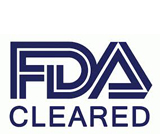Prevention for Safety
The Needlestick Safety and Prevention Act
The Bloodborne Pathogens (BBP) Standard was set forth in 1991 by the Occupational Health and Safety Agency (OSHA) and requires employers to:
| • | Develop a written exposure control plan |
| • | Set in place universal precautions |
| • | Provide personal protective equipment |
| • | Use preventive engineering controls, such as retractable needles |
| • | Implement work practice controls |
| • | Prohibit recapping, bending and removing used needles |
The Needlestick Safety and Prevention Act was passed unanimously passed by both houses of Congress and was signed by President Clinton in the year of 2000. This act was designed to protect U.S. healthcare workers from injuries caused by needles and other sharp medical devices and requires employers to:
| • | Demonstrate that they are reviewing new technology and engineering controls to reduce the risk of needle stick injury annually. |
| • | Maintain a sharps injury log to track, report and describe such incidents. |
| • | Solicit input from employees who actually provide direct care in the identification, evaluation, and selection of effective safety devices and work practice controls. |

